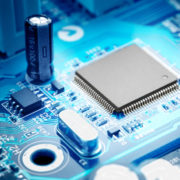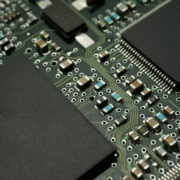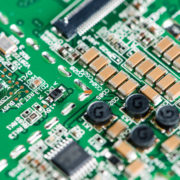The role of SoC in IoT and embedded systems
In the ever-evolving landscape of microsystems, the integration of hardware and software has become a pivotal factor in the success of IoT (Internet of Things) and embedded systems. One key player in this integration is the System on a Chip (SoC), a compact yet powerful solution that has transformed the way microsystems companies design and implement their products.
The Foundation of Integration: Understanding System on a Chip (SoC)
At the heart of many modern microsystems, the System on a Chip serves as the cornerstone for seamless integration. An SoC is a single, highly integrated circuit that encapsulates all the necessary components of a computer or electronic system onto a single chip. These components typically include a central processing unit (CPU), memory, input/output ports, and often specialized processing units.
The magic of an SoC lies in its ability to unify various functions into a singular, cohesive unit. This consolidation enhances efficiency, reduces power consumption, and enables a more compact form factor – crucial elements for microsystems companies looking to deliver high-performance solutions in a compact space.
Enhanced Connectivity with System on a Chip (SoC)
In the realm of IoT, connectivity is paramount. SoCs play a pivotal role in facilitating seamless communication between devices, enabling them to exchange data and execute tasks collaboratively. By incorporating communication protocols such as Wi-Fi, Bluetooth, and Zigbee directly onto the chip, SoCs eliminate the need for additional external components, reducing complexity and cost for microsystems companies.
Moreover, SoCs empower embedded systems with the ability to adapt and communicate in real-time. Whether it’s a smart thermostat adjusting room temperature based on occupancy or a connected industrial sensor providing critical data for predictive maintenance, the integration of an SoC ensures efficient and reliable communication within the network.
System on a Chip (SoC) in Action: Real-World Applications
- IoT Devices Redefined: SoCs have revolutionized the design and functionality of IoT devices. From smart home gadgets to wearable fitness trackers, the integration of various sensors, processors, and communication modules into a single SoC has paved the way for more intelligent and connected devices. Microsystems companies can now develop IoT solutions that are not only compact but also energy-efficient, addressing the growing demand for sustainable technology.
- Embedded Systems Evolution: Embedded systems, which are an integral part of various industries including automotive, healthcare, and manufacturing, have experienced a paradigm shift with the advent of SoCs. The compact nature of SoCs allows for the creation of highly sophisticated and feature-rich embedded systems, enabling tasks such as real-time data processing, machine learning, and computer vision. This versatility empowers microsystems companies to tailor their embedded solutions to meet the specific needs of diverse applications.
The Future Landscape: Expanding Horizons with System on a Chip (SoC)
As microsystem companies continue to push the boundaries of innovation, the role of System on a Chip in IoT and embedded systems is poised to expand further. The ongoing advancements in SoC technology, including the integration of AI accelerators, improved energy efficiency, and enhanced security features, will open new possibilities for creating intelligent, connected, and secure microsystems.
In conclusion, the System on a Chip stands as a transformative force in the microsystems industry, enabling companies to bring forth innovative and efficient solutions in the realms of IoT and embedded systems. As SoC technology continues to evolve, microsystems companies will undoubtedly find new ways to leverage its capabilities, shaping the future of interconnected and intelligent devices.
Linear MicroSystems, Inc. is proud to offer its services worldwide as well as the surrounding areas and cities around our Headquarters in Irvine, CA: Mission Viejo, Laguna Niguel, Huntington Beach, Santa Ana, Fountain Valley, Anaheim, Orange County, Fullerton, and Los Angeles.











